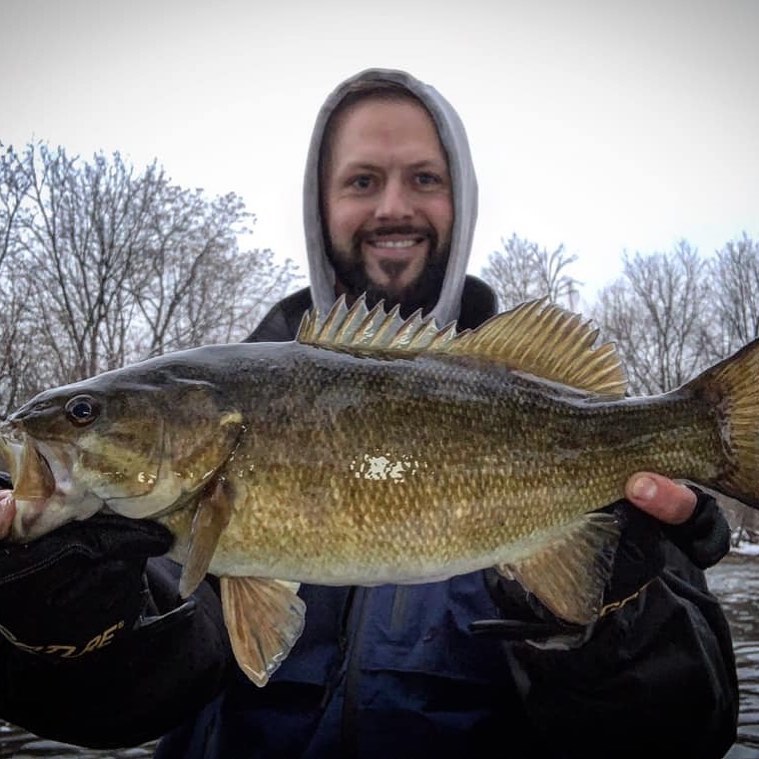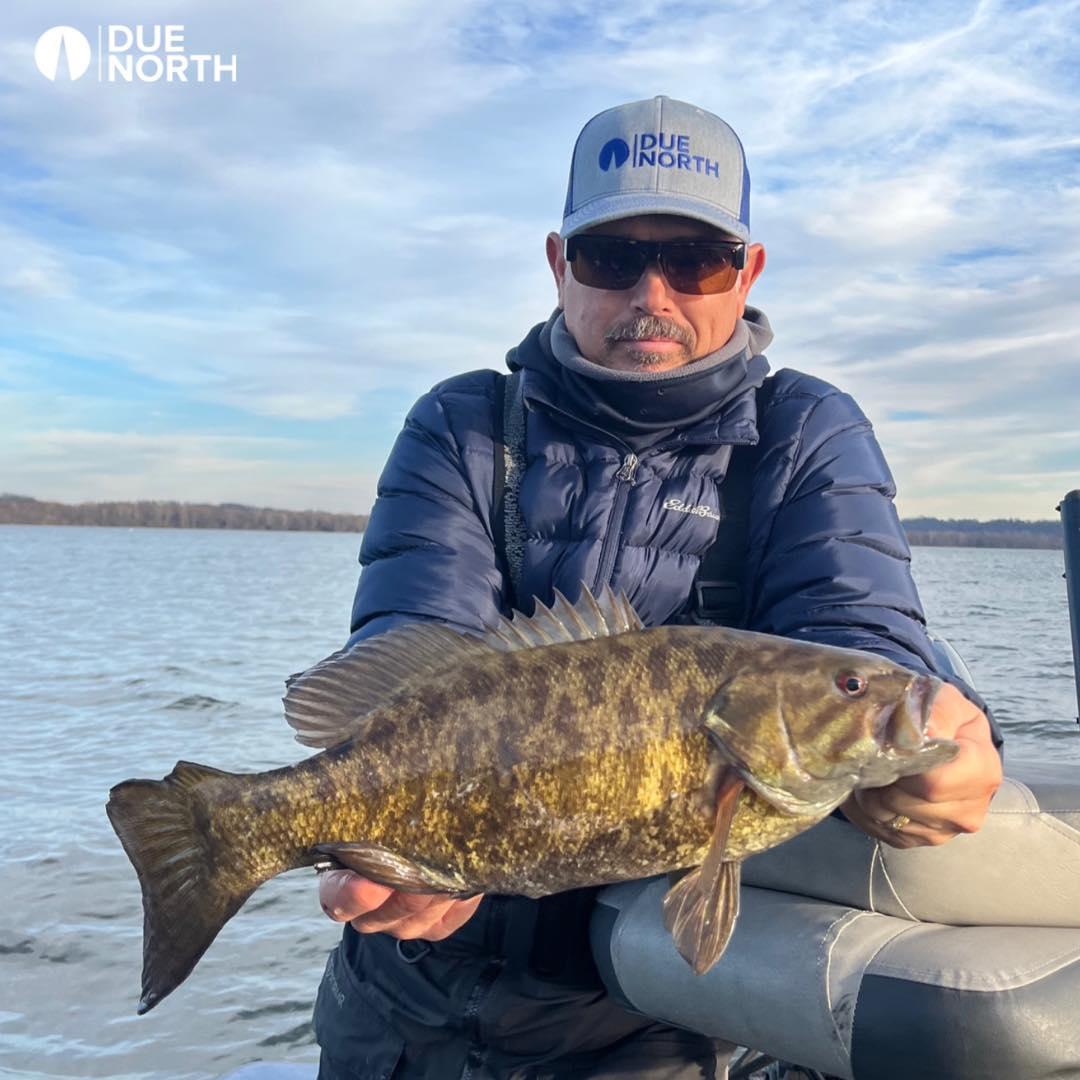Finding Smallmouth Bass in Cold Water: The Key to Success
As the water temperature drops, smallmouth bass begin to move to deeper structures where they can remain more comfortable. Unlike their warmer-weather behavior, smallmouth in cold water become sluggish and less likely to chase fast-moving prey. However, with the right tools and strategies, you can still catch them throughout the winter months. The key to success is knowing how to locate these fish and understanding the best techniques for coaxing them to bite.
One of the most effective tools for finding winter smallmouth is modern electronics, particularly side-imaging sonar. This technology allows you to scan large areas of water and pinpoint submerged structures, drop-offs, and schools of fish. These structures are where smallmouth bass are most likely to be holding during colder months.
The Role of Electronics in Cold Water Fishing
When smallmouth move to deeper waters, finding them without the right tools can be a real challenge. That’s where electronics like side-imaging sonar come into play. Side-imaging allows you to scan the water around you, giving you a clear picture of the underwater terrain. With this technology, you can easily identify key features like drop-offs, rock piles, humps, and ledges, which serve as prime locations for wintering smallmouth.
Key Tips for Using Side-Imaging Sonar:
- Scan Deeper Waters: In cold weather, smallmouth typically move deeper, often to depths of 15 to 30 feet, or even deeper in some cases. Side-imaging sonar will help you locate these deeper areas and identify fish holding near structures.
- Look for Suspended Fish: Smallmouth are likely to suspend above the bottom in colder water. Look for marks in the middle of the water column, as they can often be the fish you’re targeting.
- Find Transition Zones: Focus on areas where shallow water transitions to deep water. Smallmouth bass are often found along these “breaklines” as they seek both food and stability in water temperature.
By using side-imaging sonar, you can save time and effort searching for the right fishing spots, which is particularly crucial when the cold temperatures make fishing conditions more challenging.
Best Baits and Techniques for Cold Water Smallmouth
Once you’ve located the fish, the next challenge is getting them to bite. Cold-water smallmouth tend to be sluggish, so it’s important to use baits and techniques that will trigger a bite despite their lethargy.
- Jerkbaits: One of the best baits for targeting cold-water smallmouth is a jerkbait. These baits mimic the erratic movement of baitfish, triggering strikes from bass that are less inclined to chase fast-moving prey. In cold water, it’s important to use a slow, deliberate retrieve. Let the bait sit for several seconds between jerks to mimic the behavior of an injured or struggling fish.
- Hair Jigs: Hair jigs are another excellent option for winter smallmouth. The subtle, fluttering motion of the hair or feathers is often irresistible to bass in colder water. A hair jig works well when fished slowly along the bottom or through deeper submerged structures. Fish it with a slow lift-and-drop motion to keep the bait in the strike zone longer.
- Drop-Shot Rigs: For smallmouth that are more stubborn in their feeding habits, a drop-shot rig with a finesse worm can be effective. This technique is especially useful for targeting fish that are holding just off the bottom or suspended in the water column.
Regardless of the bait, remember that winter smallmouth fishing requires patience and precision. A slow presentation is key to enticing sluggish bass to bite.
In addition to relying on visual cues like the realistic action of jerkbaits or hair jigs, incorporating sound and scent into your bait presentation can significantly increase your chances of success. As detailed in our blog on Scent and Sound for Winter Bass, bass in cold water often rely more on their senses of smell and hearing than on sight due to reduced activity levels. Adding scented attractants or using lures that emit subtle vibrations can make your presentation more enticing to lethargic fish.
Best Times of Day to Fish for Smallmouth in Cold Water
Timing is crucial when fishing for smallmouth bass in cold water. As the water temperature decreases, smallmouth become less active, so you’ll need to fish during the times of day when they are most likely to be feeding.
Morning and Late Afternoon: The best times to fish for smallmouth in cold water are typically during the early morning and late afternoon. As the sun rises, the water temperature increases slightly, encouraging bass to feed more actively. Similarly, as the sun sets, water temperatures can drop, prompting smallmouth to move shallower or become more aggressive in their feeding behavior.
Midday Lulls: During the middle of the day, smallmouth are less likely to bite. The coldest water temperatures often occur in the early morning or late afternoon, so plan to fish during these windows for the best chance of success.
Conclusion: Patience and Persistence for Winter Smallmouth
Patience, persistence, and the right strategies are the keys to finding success with cold-water smallmouth bass. By leveraging tools like side-imaging sonar, focusing on slow bait presentations with jerkbaits or hair jigs, and fishing during the most active times of day, you can overcome the challenges of winter fishing and enjoy rewarding days on the water.
Want to learn more about maximizing your success during the colder months? Visit Everything Smallmouth for expert advice, gear reviews, and in-depth fishing strategies that will keep you catching bass all year long!



